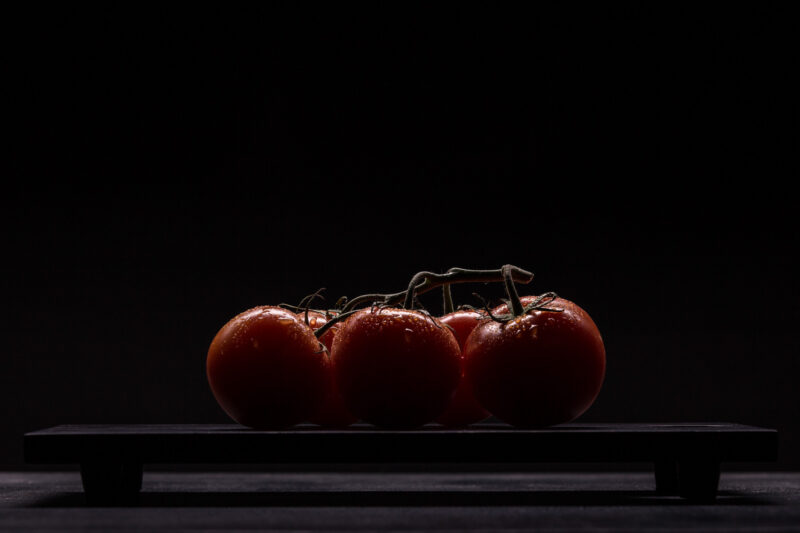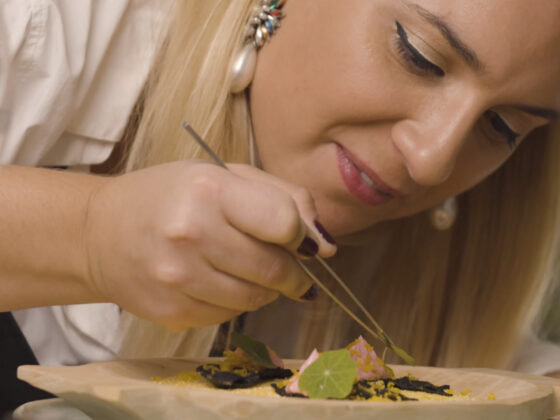Imagine biting into a sweet, ripe tomato, with its juices bursting out as your teeth pierce its flesh, with its smell and aroma providing your gustatory system with a great deal of pleasure. I am among the lucky ones to be able to recreate this feeling just by thinking about it. It must be rooted in my grandpa’s skill to only choose the best tomatoes at the local farmers’ market. As I sip my wine to the tunes of Tom Waits, my mind lingers on the thought of that floral sweetness of a tomato I don’t even currently have in the house. Food is love, happiness, beauty and much of what makes us humans. But what about that tomato?
The transformation of ingredients through cooking techniques helped our brains develop. The domestication of animals and plants, some ten-thousand years ago created civilisations. Empires thrived on the trade of ingredients and wars started when food was scarce.
Gone are the days when black pepper could be used as currency, and while our society may have gone slightly adrift with influencers trading an Instagram post for a meal, food has never been more exciting than it is today.
Gastronomic revivalists – those heroes of our time on a quest to preserve and modernise old ways of transforming food, have easier access to information and a stronger voice to pass on their findings. How many people would, in the Middle Ages, have documented food history, in between crusades and the Black Death? And while we still cheer like in Medieval times – albeit a little more delicately, since the risk of getting poisoned has decreased, and so has the thickness of our glasses, Renaissance-born table manners are slowly fading out.
To speak of traditional, local food is always a paradox that needs a holistic historical context. After all, even that mighty, sweet and juicy tomato, now omnipresent in any kitchen and food dream, only came to Europe in the 16th Century. Europeans used it as a decorative plant until the 18th Century, when they realised that it was no longer poisonous once ripe or cooked. The noodle, transformed by Nonnas around Italy in all shapes and forms, came from China, thanks to Marco Polo. Ginger reached England in the 11th Century and was a popular ingredient in local cookery until the industrial revolution – the start of today’s bad food reputation Britain has gained.
Food trade started some four-thousand years ago. With borders changing throughout history, with every new people conquering a new territory, with trade routes such as the Silk Road, with colonisation and now, globalisation we have had constant access to foreign ingredients. Some of them thrived in our soils, others still have to be imported. Just think of cacao – all of you, who have a sweet tooth and a craving for a bite of a dark, crunchy, sweet and bitter tablet of chocolate. While cacao cannot grow in Europe, we all have it in our pantry. Is this to say that the Sachertorte, the chocolatey cake with layers of apricot jam that tourists queue for hours to have a slice of, is not Austrian? As a matter of fact, apricots did not originate in Europe either, but came from China. And still, one of the most beautiful sights in spring in Austria, are the blossoming apricot trees along the Wachau Valley.
To me, reducing ‘local’ or ‘traditional’ cuisine only to ingredients or techniques from a specific point in time, is a little like Plato’s allegory of the cave. One creates a gastronomic universe out of what one sees available, without being able see what happens or could happen once outside the cave. If a wide variety of citrus trees can grow in Schönbrunn’s Orangerie, then why can’t Austrian chefs make use of those in a ‘local’ manner? And what is local, anyway? And what about traditional?
Is ‘local’ or ‘traditional’ what has been happening in the past ten, fifty, one hundred, or one thousand years? Is a sous-vide steak less local than one cooked over an open fire, independently of one’s preference towards one or the other? And can it still be traditional? And does that sous-vide steak bear the chance to become traditional in some twenty years from now? Before humans controlled fire, that steak was raw – and it was not called steak, either. Before thermometers were invented in the 19th Century, were all steaks that perfect medium-rare contemporary chefs dream of? And was that traditional? Is it traditional today, to cook a medium-rare steak?
Is food from communist Romania less traditional than that prepared during its monarchy, or even before that? Is my grandma’s stew more or less traditional than someone else’s grandma’s stew?
At least, a tomato’s primary qualities can be quantified in a lab – its contents of lycopene, phenolic acids, lectins, etc,. And even then, one tomato fruit will differ from another, even when they come from the same plant. Is one tomato more tomato than another tomato?
With the rising popularity of Japanese food, miso breweries have been springing all around Europe. Austria now even grows rice. And while it is certainly local, is it traditional? And if it isn’t today, can it become traditional?
Thankfully, in the internet and book publishing realm, there is a lot of space to be filled. ‘Local’, ‘glocal’ and ‘traditional’ will keep evolving and luckily we now have enough gastromones to document this evolution.




